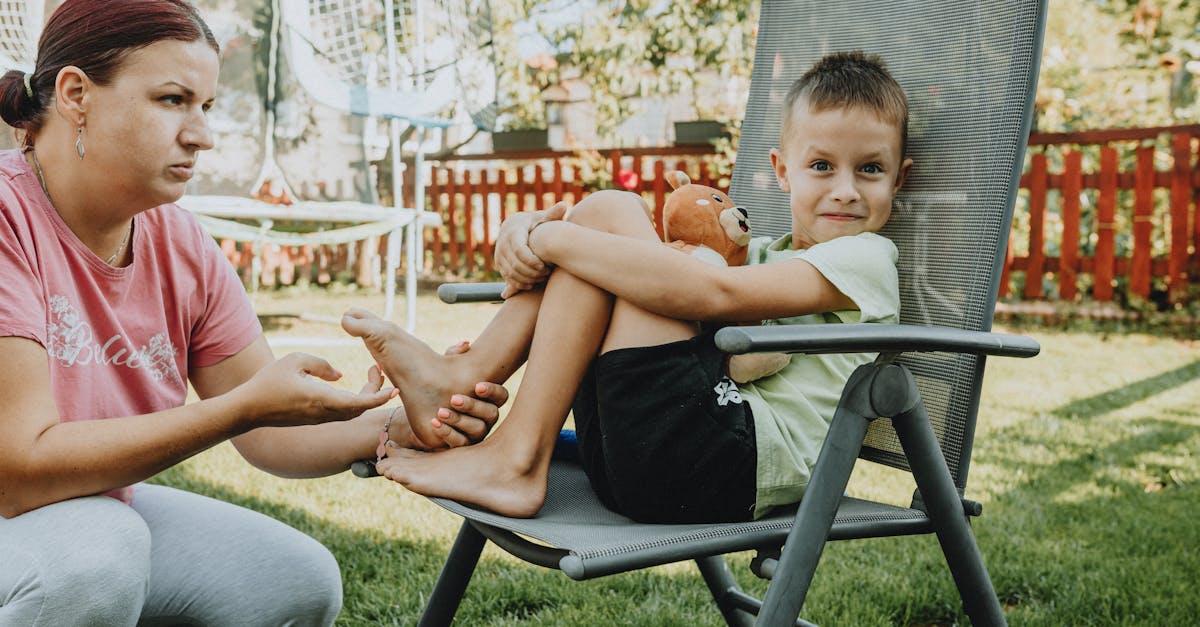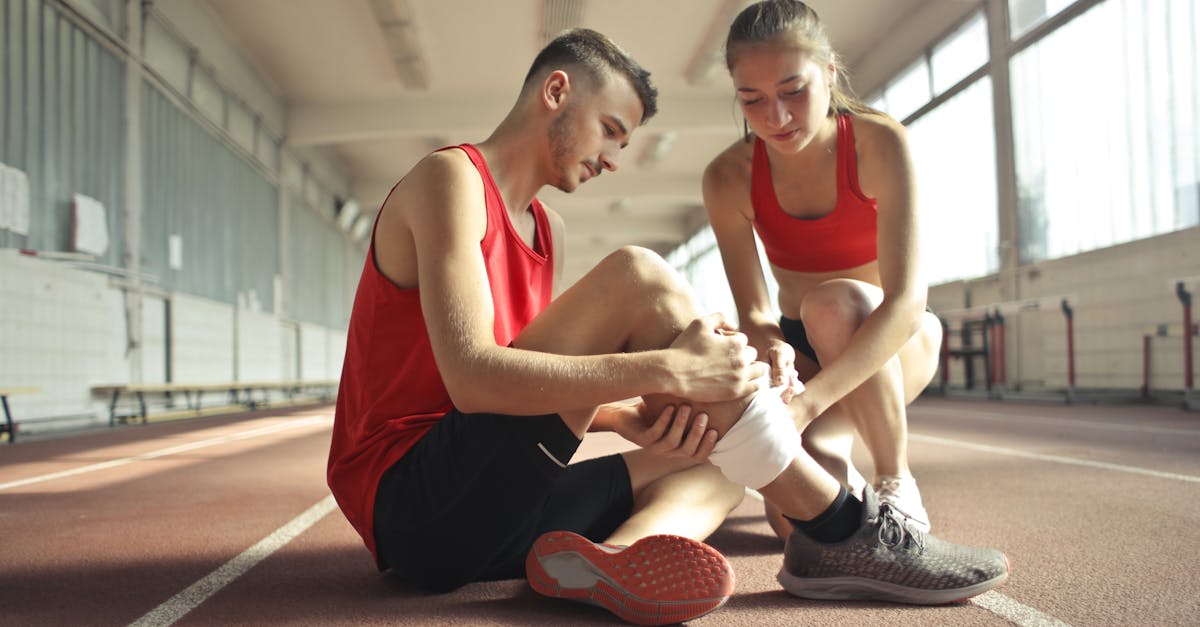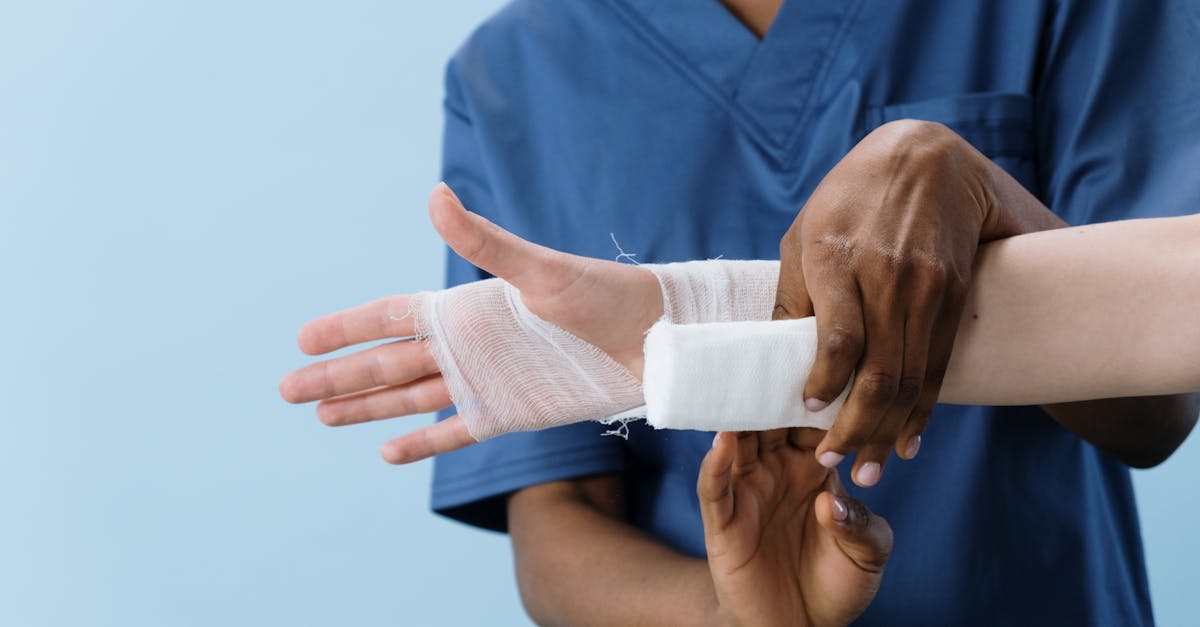Brachial Plexus Injury Got You Down? Discover Pulse Align’s Gentle Method!
In Short: Are you dealing with a brachial plexus injury causing discomfort and pain? Regain mobility and reduce your discomfort through targeted approaches and innovative solutions. Pulse Align Clinics offer a unique, simple strategy focusing on gentle postural recalibration that can help you reclaim your health and do more of what you love. Take action today and experience the benefits of our methods. BOOK YOUR APPOINTMENT now!
Are you struggling with shoulder pain and navigating a brachial plexus injury?
If so, consider Pulse Align’s Gentle Method, a holistic approach designed to promote shoulder pain relief and facilitate recovery from a brachial plexus injury. This innovative method emphasizes safe movements and targeted treatments that not only address the root causes of your shoulder discomfort but also enhance overall mobility. Many individuals experience challenges such as frozen shoulder, and opting for quality care can make all the difference. At Pulse Align, our focus on gentle, effective shoulder pain exercises helps guide you toward a pain-free life, allowing you to regain control and enjoy your everyday activities once more.

Shoulder discomfort can often feel like a raincloud lingering overhead, making everyday tasks feel more like hurdles. But what if you could embrace a life where you’re free to lift your arms and enjoy activities you love? Welcome to the world of posture improvement and neuromuscular recalibration at Pulse Align, where we put a gentle spotlight on well-being and natural harmony.
Understanding the Pulse Align Approach
At the heart of Pulse Align’s philosophy lies the powerful concept of balance. Our bodies thrive on muscle tone symmetry, which is essential for maintaining posture and alleviating tension. Through our innovative techniques, we gently stimulate the body to promote its natural ability to recalibrate. It’s a technology that respects your body’s processes, enhancing overall well-being without the need for invasive methods. Imagine a gentle yet effective approach—it’s here at Pulse Align.
Holistic Benefits and Natural Healing
We believe that nurturing the body’s innate capacity for healing is vital. This family-friendly approach not only supports individual wellness but also promotes an inclusive atmosphere for clients of all ages—yes, even pregnant women and children are welcome! While we empower our clients to explore their physical potential, we simultaneously respect the natural healing journey each person is on. Our focus is on restoring muscle tone and symmetry, which may naturally help ease common feelings of discomfort.
Client Success Stories
Don’t just take our word for it; the stories we hear from our valued clients speak volumes. Many have found ways to improve posture naturally and reduce neck discomfort by discovering the gentle and conducive environment at Pulse Align. Whether clients enter seeking balance or relief, the positive feedback echoes a renewed sense of freedom and comfort in their movement—imagine being able to tend to your daily activities without the weight of discomfort!
Take the First Step with Pulse Align
Ready to embark on your journey to improved well-being? Discover the options available at Pulse Align—our clinics span across cities including Montreal, La Prairie, Terrebonne, and Chicoutimi. We invite you to explore how our gentle methods can enhance your everyday experience. Visit Pulse Align to learn more and book a consultation for you and your family. Remember, our approach is designed to complement your healthcare journey, working alongside your existing support system.
- Understanding Brachial Plexus: Know how it impacts your shoulder and arm.
- Symptoms to Watch: Identify signs such as pain, weakness, or numbness.
- Gentle Exercises: Engage in light movements to enhance flexibility.
- Electrical Stimulation: Use this method to activate muscle nerve signals.
- Professional Guidance: Work closely with therapists experienced in brachial plexus injuries.
- Monitoring Progress: Keep track of improvements for tailored treatment.
- Collaborative Care: Access comprehensive support for best recovery outcomes.

Navigating a Brachial Plexus Injury: Consider Pulse Align’s Gentle Method
Experiencing a brachial plexus injury can be daunting, affecting not only your arm and shoulder function but also your daily quality of life. Fortunately, with the right approach to shoulder pain relief, patients can regain strength and mobility. This article explores how Pulse Align’s gentle methods provide holistic solutions as we highlight effective strategies for rehabilitation.
Understanding Brachial Plexus Injuries
The brachial plexus is a network of nerves that travel from your spinal cord through the neck, ultimately reaching the arms. Injuries to this area can result from trauma, leading to symptoms such as pain, weakness, numbness, or even loss of movement. Identifying the shoulder pain causes is crucial in devising an effective treatment plan.
Gentle Method Approach to Rehabilitation
Pulse Align employs a gentle, comprehensive approach to address shoulder pain stemming from brachial plexus injuries. This method emphasizes posture correction, core strengthening, and tailored shoulder pain exercises that help in restoring balance and function. It’s essential to start slowly, gradually increasing strength and flexibility.
Effective Shoulder Pain Exercises
Introducing gentle, targeted exercises can help alleviate symptoms associated with brachial plexus injuries. Consider the following:
- Range of Motion Exercises: Focus on gentle movements that encourage flexibility in the shoulder joint without exacerbating pain.
- Activation Exercises: Simple shoulder lifts or wall slides can stimulate the nerves and muscles to encourage recovery.
- Strengthening Workouts: Once you feel comfortable, incorporating resistance bands can help strengthen the areas affected by the injury.
Importance of Holistic Recalibration
At Pulse Align, the emphasis is placed on neuromuscular health and nervous system recalibration. This holistic approach recognizes that true recovery requires not just physical exercises but emotional and mental well-being as well. Engaging with a therapeutic professional can enhance this recalibration process, leading to profound and lasting benefits.
Creating a Supportive Environment
Reevaluating your everyday routines is vital. Simple adjustments can significantly impact your recovery journey. For instance, practicing proper body mechanics when lifting or carrying can substantially reduce the strain on your injured shoulder. Additionally, introducing trunk exercises that enhance postural stability can alleviate undue stress on your brachial plexus.
Why Choose Pulse Align?
With services like personalized exercise plans and modalities such as shockwave therapy, Pulse Align stands out in catering to those with brachial plexus injuries and other shoulder issues. The clinic’s multidisciplinary professionals are dedicated to guiding you toward effective shoulder pain relief and holistic health.
Call to Action
Invest in your recovery today! Contact Pulse Align to book a consultation and discover how our gentle method can support your rehabilitation journey. With a focus on personalized care, our team will help you regain your strength and reclaim a pain-free life.
| Aspect | Description |
| Focus | Emphasizes wellness and a personalized approach to recovery. |
| Method | Utilizes gentle techniques for natural body recalibration. |
| Importance of Movement | Encourages gent range of motion exercises to enhance mobility. |
| Holistic Approach | Aims to nurture both the body and mind, promoting overall balance. |
| Supportive Environment | Fosters a friendly atmosphere that prioritizes comfort during the process. |
| Community Engagement | Encourages individuals to connect with a supportive community during recovery. |
| Goals | Promotes empowerment through self-discovery and strength enhancement. |
| Adapting Techniques | Offers adaptable methods suited to individual needs and abilities. |
| Overall Experience | Aims to make recovery feel accessible and fulfilling. |
| Positive Mindset | Encourages maintaining a positive outlook throughout the process. |

Empower Your Wellness Journey with Pulse Align
Clients navigating a Brachial Plexus Injury often feel overwhelmed, but with Pulse Align’s Gentle Method, many have reported remarkable and natural improvements. This unique approach emphasizes the body’s natural ability to recalibrate and restore balance, addressing not just the symptoms but also the root causes of discomfort. Individuals from various regions, such as La Prairie and Mont-Royal, have discovered how this method provides hope and healing in their recovery.
One satisfied client from Terrebonne shared their journey, stating, “After just a few sessions using Pulse Align’s approach, I started to notice a significant decrease in pain and regained some strength in my arm. It felt like my body was finally able to heal itself.” Testimonials like these reflect the holistic benefits of this treatment as it seamlessly integrates with the body’s innate capabilities for restoration.
For those in Châteauguay and Saint-Jérôme, Pulse Align has become a beacon of support. One local resident remarked, “I had tried everything to alleviate my shoulder pain with little success, but Pulse Align’s gentle recalibration method has changed my life. It doesn’t just mask the issues; it allows for a genuine and lasting recovery.”
We believe in working closely with healthcare teams to ensure that clients and their families receive the comprehensive support they deserve on their wellness journey. Whether you are in the vibrant community of Chicoutimi or the serene landscapes of Sainte-Marie, our services are designed to reach you where you are and guide you towards improved body function and overall wellness.
Discover the unique healing benefits of our locations by exploring Our Clinics. Join the many clients from places like Deux-Montagnes and Les Escoumins who have taken the first step towards a brighter, pain-free future with Pulse Align. Embrace the possibility of reclaiming your health, naturally and effectively!
Brachial Plexus Injuries have a way of impacting one’s life significantly, often stemming from trauma to the neck. This injury can surprise you with its *pain*, *weakness*, or *numbness* radiating down the *arm* and into the *hand*. It’s a condition that doesn’t just affect the moment; instead, it intertwines with daily life, dramatically reducing one’s *mobility* and overall *quality of life*.
When it comes to this injury, timely and tailored treatment is crucial. For some, gentle *range of motion exercises* performed at home, combined with regular examinations from a healthcare professional, may suffice. Others may uncover the necessity for more advanced interventions. The goal? Get back to *normal* as soon as possible.
A common culprit behind the brachial plexus injury is the *axillary nerve injury*. This can happen due to compressive forces or even from the shoulder dislocating in an unfortunate mishap. The good news is that there are pathways to recovery, shining a light on hope for those grappling with this condition.
In some instances, *electrical stimulation* may be used to facilitate communication between nerves and muscles, aiding in recovery. Furthermore, early surgical intervention is often paramount. For *young children*, specialized programs offer comprehensive support as they navigate through their rehabilitation journey.
Our Mission
At Pulse Align, our mission is to deliver evidence-based, client-centered treatments that address the underlying causes of pain and dysfunction. By integrating advanced techniques and technologies, we strive to empower each person to take control of their health, ensuring a high standard of care, lasting relief, and an improved quality of life.
Understanding that support is paramount, awareness surrounding brachial plexus injuries continues to grow. Remember that it’s not just about managing symptoms; it’s about reclaiming that *freedom of movement* and embracing life again, one step at a time. Discover more about this empowering approach and the available services at our site, and find a location near you for personalized support.
Transforming Chronic Pain with TAGMED’s Spinal Decompression Technology
TAGMED offers a cutting-edge solution through its advanced Spinal Decompression Therapy, designed specifically to combat moderate-to-severe disc problems, such as herniated discs and bulging discs. This non-surgical technique gently alleviates pressure on affected discs and nerves, enhancing mobility, alleviating pain, and facilitating your body’s natural healing processes. If you’ve been struggling to find lasting relief from other therapies, discover how TAGMED’s evidence-based approach can guide you back to an active and comfortable life.
Have you tried conventional treatments and still struggle with persistent back pain due to a severe disc condition?
Mechanism of Action
TAGMED’s neurovertebral decompression employs a controlled, progressive traction force that is gently applied to the spine. This innovative method increases the space between vertebrae, effectively reducing pressure on both intervertebral discs and nearby nerve roots. By promoting better fluid circulation in the targeted area, the therapy helps to lower inflammation and relieve pain, providing a reliable, non-invasive option for individuals suffering from chronic back pain.
Specific Benefits
This non-invasive approach has shown remarkable efficacy in alleviating chronic pain and symptoms associated with conditions like spinal stenosis and degenerative disc disease. By optimizing fluid circulation around the discs and significantly reducing pressure on nerve structures, TAGMED’s spinal decompression therapy can expedite recovery, offering improved quality of life for patients enduring persistent discomfort.
Comparison with Other Treatments
When compared to commonly utilized interventions such as pain medications, corticosteroid injections, or even invasive surgery, TAGMED’s neurovertebral decompression stands out for its efficacy and safety profile. This technique minimizes medication-related risks, avoids invasive procedures, and paves a potentially faster path to recovery. Its appeal lies in providing a remarkably safe, evidence-based alternative, making it a compelling choice for patients seeking solutions to their chronic pain without the side effects associated with traditional treatments.
Case Studies or Testimonials
Numerous patients have reported significant benefits from TAGMED’s neurovertebral decompression, emphasizing the lasting pain relief and quicker return to their daily activities. Real testimonials highlight how this therapy has reduced dependence on pharmaceuticals for managing chronic pain, showcasing tangible results achieved through this innovative approach.
With a focus on evidence-based practice, TAGMED not only promotes healing and comfort but also empowers individuals to reclaim their lives from the grips of chronic pain.
If you’re facing the challenges of a brachial plexus injury, Pulse Align offers a gentle path toward improved well-being. By focusing on posture correction and supporting your body’s natural healing abilities, Pulse Align provides a holistic approach that encourages enhanced mobility and reduced discomfort.
Clients have experienced significant improvements in their daily lives, allowing them to move with greater ease and enjoy each moment without the limitations of pain. The emphasis on wellness and natural pain relief makes this approach not just effective, but also uplifting.
We invite you to discover the Pulse Align difference today. Schedule your consultation now and embrace a journey towards a healthier, more balanced you. By choosing a supportive and non-invasive method, you can take the crucial steps needed for neuromuscular recalibration and overall wellness.
Take control of your recovery and feel the positive changes that await you! Every step you take is a move toward a brighter, pain-free future.

Do you suffer from a condition that responds little or not at all to conservative treatments?
At Pulse Align, we understand how frustrating it can be to feel discomfort or tension that doesn’t seem to improve, even with traditional methods. Our non-invasive, innovative approach utilizes gentle, imperceptible pulses that help restore the body’s natural balance and posture. By encouraging recalibration within your body, we support the natural processes that can lead to a reduction in muscle and joint tension, enhancing your overall sense of well-being.
What sets Pulse Align apart is that we don’t focus on discomfort or specific conditions. Instead, our aim is to help your body naturally recalibrate itself, leading to improvements in comfort and posture that many of our clients have cherished. This gentle method promotes muscle tone symmetry and enhances functional balance, which can transform your wellness journey from the inside out.
Our personalized approach means that we understand each client’s unique journey. Numerous testimonials reflect the intense satisfaction our clients feel after experiencing notable improvements. We pride ourselves on the holistic benefits that extend beyond traditional perspectives. Many have reported feeling more at ease overall, experiencing less tension in the neck and back, and enjoying an increased sense of vitality in their daily lives. This comprehensive experience fosters an environment of wellness that embraces all members of the family.
We invite you to explore what Pulse Align offers by visiting our website. You can easily find nearby locations, whether you’re in La Prairie, Mont-Royal, Terrebonne, or many other cities, and book a consultation for yourself or your family. Remember, our approach complements, rather than replaces, any healthcare services you may already be receiving. At Pulse Align, we’re committed to providing a safe, non-invasive, and family-friendly experience that enhances your wellness journey. To learn more and conveniently book an appointment online, visit Pulse Align.
Frequently Asked Questions
Shoulder Pain
- Is surgery ever necessary?In severe cases (tendon tears, advanced osteoarthritis, chronic instability), surgery may be considered.
- Does carrying heavy loads cause shoulder pain?Yes, lifting heavy objects without proper technique can overload the shoulder and cause pain.
- Do strengthening exercises help prevent shoulder pain?Yes, strengthening the rotator cuff, back, and core muscles can stabilize the shoulder and lower injury risk.
- Can an old injury reappear as shoulder pain?Yes, an old improperly rehabilitated injury or fracture may resurface as chronic pain.
- When should I see a physical therapist for shoulder pain?If the pain persists, interferes with daily activities, or comes with limited mobility, a therapist can provide tailored treatment.
- Should athletes strengthen their rotator cuff?Yes, specific exercises to strengthen the rotator cuff are often recommended for athletes.
- Does poor blood circulation influence shoulder pain?Reduced blood flow may slow healing and increase stiffness, contributing to persistent pain.
- Can massages relieve shoulder pain?Yes, a gentle massage can release muscle tension, improve circulation, and reduce pain, but avoid abrupt movements.
- Is heat or cold effective for shoulder pain?Cold reduces inflammation and acute pain, while heat relaxes muscles and relieves stiffness.
- Can I do self-massage with a tennis ball?Yes, placing a tennis ball between your shoulder and the wall can gently massage sore spots and improve circulation.
Simon Leroy understands that shoulder pain can do more than slow you down—it can impact your entire quality of life. As a Shoulder Pain Awareness Advocate at Pulse Align, he’s dedicated to showing readers that genuine relief is not just possible, but within reach. Drawing on the latest research, Simon combines expert insights with compassionate guidance, inspiring people to move toward greater comfort and mobility. His approach is about more than just managing symptoms; it’s about empowering individuals to rediscover their strength and embrace every moment, free from the constraints of pain.
Medical Disclaimer
The information and advice provided on this site do not replace the advice, diagnosis, or treatment of a healthcare professional. Please note that the author of this article is neither a doctor nor a specialist in a medical specialty as defined by the Collège des médecins du Québec. Manual medicine, functional medicine, and sports medicine as described on this site exclude any medical treatment or diagnosis made by a doctor or medical specialist. Always consult your doctor for any medical questions. For more details, please read our complete Legal Notice.
References
- Seah, Pei Zhen, et al. “Risk Stratification of Paediatric Sports Injuries Seen at a Tertiary Hospital.” Ann Acad Med Singap, vol. 49, 2020, pp. 955–62, https://www.annals.edu.sg/pdf/49VolNo12Dec2020/V49N12p955.pdf.
- Jayashankar, Venati, and M. Srinivas Naik. “A Research Study on Deaths Due to Injuries to Abdomen Brought to Ananthapuram Govt. Medical College Mortuary, Andhra Pradesh from January 2010 to December 2016.” Medico-Legal Update, vol. 18, no. 2, 2018, pp. 181–84, https://www.indianjournals.com/ijor.aspx?target=ijor:mlu&volume=18&issue=2&article=040.
- Bahr, Roald, and Sverre Mæhlum. Clinical Guide to Sports Injuries. Human Kinetics, 2004, https://books.google.com/books?hl=fr&lr=&id=mmRnr0x0p4QC&oi=fnd&pg=PA86&dq=%22sports+injuries%22+%2B+abdomen&ots=mF6T-o_I4q&sig=CtFsHciVC0aKP7AIcw-wVJdjT6k.
- Jarraya, Mohamed, et al. “Sports Injuries at the Rio de Janeiro 2016 Summer Paralympic Games: Use of Diagnostic Imaging Services.” European Radiology, vol. 31, no. 9, 2021, pp. 6768–79, https://doi.org/10.1007/s00330-021-07802-3.
- Guermazi, Ali, et al. “Sports Injuries at the Rio de Janeiro 2016 Summer Olympics: Use of Diagnostic Imaging Services.” Radiology, vol. 287, no. 3, 2018, pp. 922–32, https://doi.org/10.1148/radiol.2018171510.
- Lenjani, Basri, et al. “Emergency Medical Care and Management of Sports Injuries on the Football Court.” Albanian Journal of Trauma and Emergency Surgery, vol. 5, no. 1, 2021, pp. 773–77, http://journal.astes.org.al/AJTES/index.php/AJTES/article/view/172.
- Liu, Tao. “Impact of Posture and Recovery Methods on Sports Injuries.” Revista Brasileira de Medicina Do Esporte, vol. 28, no. 6, 2022, pp. 719–22, https://www.scielo.br/j/rbme/a/BRzZwhZBjXSLYCHNH3PpDSL/?lang=en.
- Kaynaroğlu, Volkan, and Yusuf Alper Kiliç. “Archery-Related Sports Injuries.” Sports Injuries, edited by Mahmut Nedim Doral, Springer Berlin Heidelberg, 2012, pp. 1081–86, https://doi.org/10.1007/978-3-642-15630-4_143.
- Engebretsen, Lars, et al. “Sports Injuries and Illnesses during the Winter Olympic Games 2010.” British Journal of Sports Medicine, vol. 44, no. 11, 2010, pp. 772–80, https://bjsm.bmj.com/content/44/11/772.short.
- Nielsen, Jesper Möller, and Mats Hammar. “Sports Injuries and Oral Contraceptive Use: Is There a Relationship?” Sports Medicine, vol. 12, no. 3, 1991, pp. 152–60, https://doi.org/10.2165/00007256-199112030-00002.



